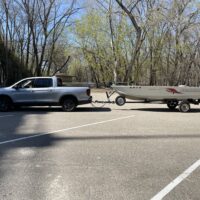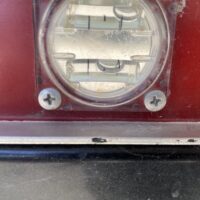From a functionality and mechanical point of view, whether or not the trailer is perfectly level doesn’t matter. For example, if the hitch is a few inches higher or lower than the height that makes the trailer level, and you look at how much tilt that creates between the front and rear ends of your leaf springs, you’ll hardly see a difference, and it won’t affect how the springs function. How these same deviations away from level affect the forces of pulling and braking, as transmitted to the trailer, is rather complicated to calculate, but if you have experience with simple vector calculations you already will know that the changes will be minuscule and couldn’t possibly affect the handling or “feel” of the trailer at all.
On the other hand, one thing that can matter sometimes is the orientation of the boat itself, and that’s the only thing I would measure. If your boat sits in a nose-down position it will collect rainwater across all parts of the boat bottom which are lower than the drain plug at the back. Given the fact that the open top of your boat your boat provides a huge area for catching rain, this weight can add up in a hurry. Rain collected across that huge area then gets funneled to the lowest parts of the boat, so just consider this illustration: A four-inch depth of water over a rectangular area of the boat bottom that is only three feet by four feet weighs 250 pounds. Have your boat just a little bit nose-high on your trailer and you won’t have to worry about this, as long as you remember to open the drain plug. And if you forget to open the plug, at least you can just open it and be done with the problem instead of trying to remove the water some other way.

